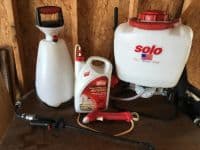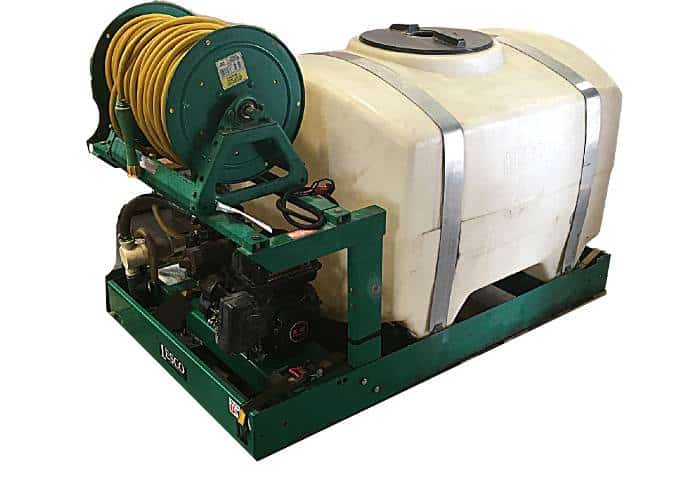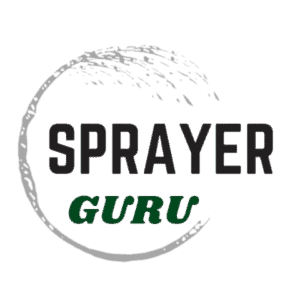Having the right tool for the job is vital for success if you’ve identified pest problems in your home you don’t want to spray something to eliminate them the natural question is what type of sprayer do you need to use for insect control?
A hand pump sprayer is commonly used to apply pesticides for insect control in the home. Both pest control professionals and homeowners use them. There are other sprayer types that can be used for different types of applications. They include skid sprayers, backpack sprayers, and boom sprayers.
Let’s examine the different types of sprayers used for insect control, what makes them unique, and in what circumstances they are best suited.
Different Types of Insecticide Sprayers

Hand Pump Insect Sprayers
They are specifically designed for spot and banding applications. There are many different brands and variations of hand pump sprayers, but they are basically all the same. The simple design is effective and convenient, allowing the user to easily apply the pesticide mixture evenly over the desired area. Their compact size is ideal for indoor use.
Backpack sprayers
Backpack sprayers are another great option for pest control and insecticide applications. A backpack sprayer provides a few benefits that a hand-pump sprayer does not. They can carry more liquid allowing you to spray for a longer amount of time without refilling. It provides you with a more ergonomic experience. There is less bending over to pump it up. Also, you’re more balanced because you are not carrying a heavy sprayer in one hand as you spray with the other.
The overall weight of a backpack sprayer when fully loaded is greater than a hand pump sprayer and some people might find it difficult to get on their back without help. But for those that do not have much of a problem getting it on their back, it makes their work much easier especially if you were going to be spraying your entire home or yard. Backpack sprayers are often used by professional pest control operators, but homeowners also find them useful.
You can find a full breakdown in this article about the features and benefits of backpack sprayers.
Pest control Skid Sprayers and Spray Rigs
Speaking of pest care professionals, skid sprayers, also known as spray rigs or power sprayers are used by professionals who have to treat large areas like commercial buildings, schools, apartment complexes, etc.

Industrial spray rigs provide several features that are advantageous when applying pesticides or insecticides on a large scale:
- Larger capacity tags for longer spray time
- Pumps capable of high volume and pressure. This is important because it provides the operator with a greater “throw” or spray distance from the spray gun. This is important for hard-to-reach areas or spraying eaves of houses, and spraying tall trees.
- Heavier duty hose spray guns, and other equipment
- Greater precision
Booms Sprayers
In some scenarios, insecticides need to be applied over a large area such as a lawn or golf course. Boom sprayers provide even and efficient coverage over a wider area than a single spray wand.
The precision you get from a boom sprayer reduces waste and minimizes drift. A boom sprayer is often pulled behind a mower or lawn tractor, making it much less physically demanding than other sprayer types.
You can learn more about boom sprayers in this article that explains them in detail.
Foggers
Eliminating some types of insects requires the use of a fogger. This is a sprayer that disperses pesticides in a fine mist, or “fog”. These fine droplets of this mist remain suspended in the air for an extended period. This makes them more effective than other sprayers when eliminating mosquitos or flies on a large scale.
When to Use Different Insecticide Sprayers
The reason there are different types of pesticide sprayers is that there are several different types of pest control applications that require different types of equipment to do the job. Although some sprayers can be used in many different scenarios, some sprayers are better suited for certain uses than others.
The table below shows the common sprayer types used in pest control and the applications they are typically used:
Sprayer Types and Insecticide Application Scenarios
| Sprayer Type | Application Scenarios |
|---|---|
| Hand Sprayers |
|
| Backpack Sprayers |
|
| Skid Sprayers |
|
| Boom Sprayers |
|
| Foggers |
|
Ultimately, selecting the right sprayer is going to be a combination of your job needs and preferences. Many sprayer types will work in multiple scenarios. It is also important to use proper calibration and application techniques. They are essential for maximizing the effectiveness of any sprayer type.

